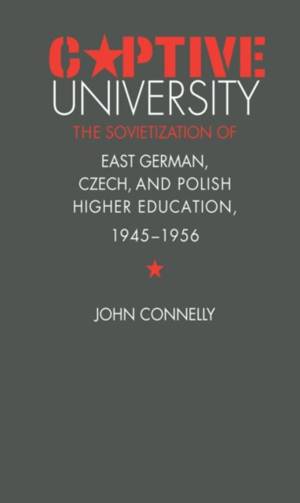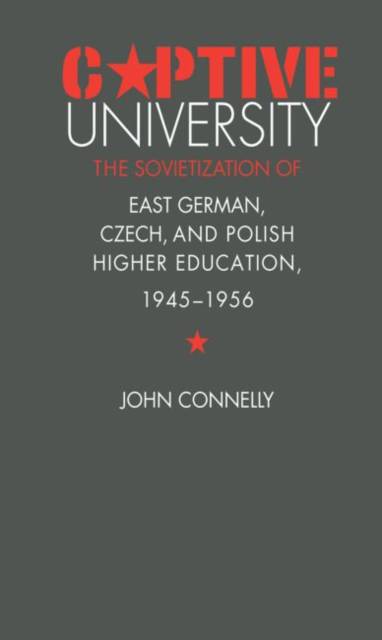
- Afhalen na 1 uur in een winkel met voorraad
- Gratis thuislevering in België vanaf € 30
- Ruim aanbod met 7 miljoen producten
- Afhalen na 1 uur in een winkel met voorraad
- Gratis thuislevering in België vanaf € 30
- Ruim aanbod met 7 miljoen producten
Zoeken
Captive University
The Sovietization of East German, Czech, and Polish Higher Education, 1945-1956
John Connelly
Paperback | Engels
€ 81,95
+ 163 punten
Omschrijving
This comparative history of the higher education systems in Poland, East Germany, and the Czech lands reveals an unexpected diversity within East European stalinism. With information gleaned from archives in each of these places, John Connelly offers a valuable case study showing how totalitarian states adapt their policies to the contours of the societies they rule.
The Communist dictum that universities be purged of "bourgeois elements" was accomplished most fully in East Germany, where more and more students came from worker and peasant backgrounds. But the Polish Party kept potentially disloyal professors on the job in the futile hope that they would train a new intelligentsia, and Czech stalinists failed to make worker and peasant students a majority at Czech universities.
Connelly accounts for these differences by exploring the prestalinist heritage of these countries, and particularly their experiences in World War II. The failure of Polish and Czech leaders to transform their universities became particularly evident during the crises of 1968 and 1989, when university students spearheaded reform movements. In East Germany, by contrast, universities remained true to the state to the end, and students were notably absent from the revolution of 1989.
The Communist dictum that universities be purged of "bourgeois elements" was accomplished most fully in East Germany, where more and more students came from worker and peasant backgrounds. But the Polish Party kept potentially disloyal professors on the job in the futile hope that they would train a new intelligentsia, and Czech stalinists failed to make worker and peasant students a majority at Czech universities.
Connelly accounts for these differences by exploring the prestalinist heritage of these countries, and particularly their experiences in World War II. The failure of Polish and Czech leaders to transform their universities became particularly evident during the crises of 1968 and 1989, when university students spearheaded reform movements. In East Germany, by contrast, universities remained true to the state to the end, and students were notably absent from the revolution of 1989.
Specificaties
Betrokkenen
- Auteur(s):
- Uitgeverij:
Inhoud
- Aantal bladzijden:
- 456
- Taal:
- Engels
Eigenschappen
- Productcode (EAN):
- 9780807848654
- Verschijningsdatum:
- 20/11/2000
- Uitvoering:
- Paperback
- Formaat:
- Trade paperback (VS)
- Afmetingen:
- 152 mm x 229 mm
- Gewicht:
- 653 g

Alleen bij Standaard Boekhandel
+ 163 punten op je klantenkaart van Standaard Boekhandel
Beoordelingen
We publiceren alleen reviews die voldoen aan de voorwaarden voor reviews. Bekijk onze voorwaarden voor reviews.











